Growing your own saffron (Crocus sativus) may seem like a romantic and exotic endeavor, but make no mistake – it is a monumental undertaking that requires patience, skill, and a whole lot of luck. Saffron, the world’s most expensive spice, is harvested from the delicate stigma of Crocus sativus, the saffron crocus or autumn crocus. It takes an enormous amount of time and effort to cultivate. While we are happy to show you how to grow saffron, we must warn you that you might be better off growing something else. Practically anything else – like dahlias, or a peach tree from a pit, perhaps?
To start growing saffron, you’ll need at least 100-250 corms, and once planted, it can take up to three years for the corms to mature and produce the delicate threads of saffron, which must then be carefully harvested by hand. But if your heart’s set and your mind’s made up, read on to discover the secrets of growing your own saffron.
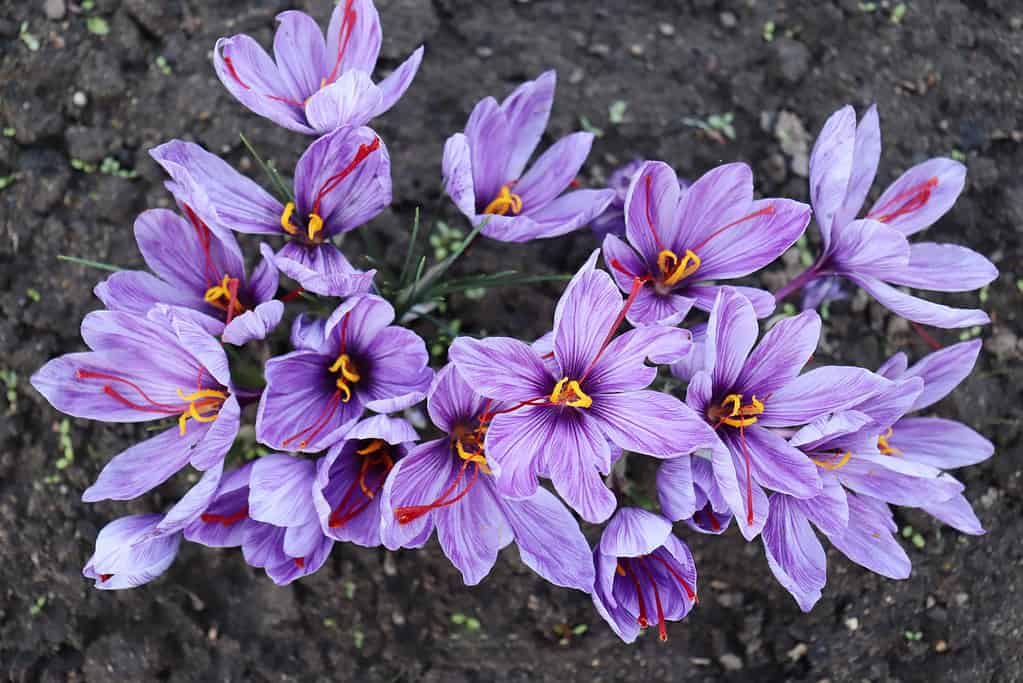
Once planted, it can take up to three years for the corms to mature and produce the delicate threads of saffron Pictured: Saffron crocus (
Crocus sativus)
©iStock.com/Hana Richterova
How to Grow Saffron: What is Saffron?
Crocus sativus is a member of the iris (Iridaceae) family. It is a sterile plant that does not produce viable seed. Instead, it is propagated by dividing the corms, which are the underground stems that the plant uses to store energy. Because of its sterile nature, the genetic makeup of Crocus sativus has remained relatively unchanged for millennia, and there is only one recognized variety of the plant.
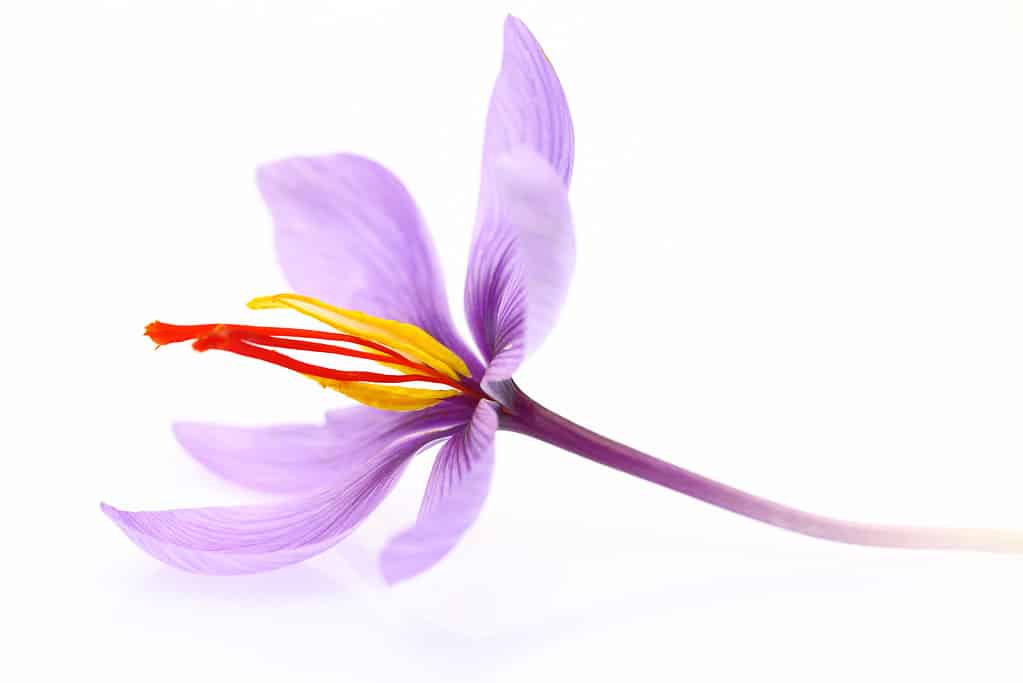
Because of its sterile nature, the genetic makeup of
Crocus sativushas remained relatively unchanged for millennia, and there is only one recognized variety of the plant.
©Gts/Shutterstock.com
Saffron is a versatile spice that can be used in a variety of dishes to add flavor, aroma, and color. Saffron comes from the dried stigmas of the Crocus sativus flower. It is one of the most expensive spices in the world due to the labor-intensive harvesting process required for its production. The stigmas of the flower must be carefully hand-picked and dried to harvest the delicate threads of saffron.
Saffron has a unique flavor and aroma, with a slightly sweet and floral taste and a distinctively earthy fragrance. It is commonly used in various cuisines around the world, particularly in Middle Eastern, Indian, and Mediterranean dishes.
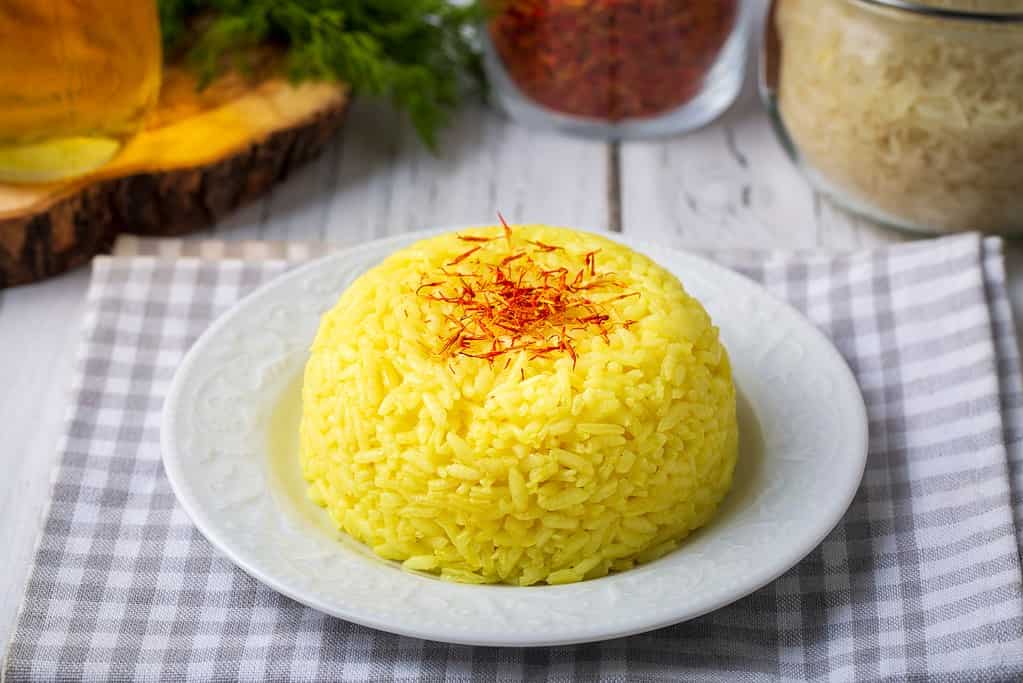
Saffron is a versatile spice that can be used in a variety of dishes to add flavor, aroma, and color. Pictured: A plate of saffron rice pilaf (Turkish name: safranli pilav)
©Esin Deniz/Shutterstock.com
How Saffron is Use
Saffron seasons a variety of foods, from savory to sweet, including:
- Rice dishes: Saffron is commonly used to add color and flavor to rice dishes like biryani, paella, and risotto.
- Desserts: Saffron is used in desserts like ice cream, cakes, and sweet rice pudding.
- Beverages: Saffron is often used to flavor and color beverages like tea, milk, and wine.
- Sauces and soups: Saffron can be used to add flavor and color to sauces and soups like bouillabaisse, tomato sauce, and cream-based sauces.
- Spice blends: Saffron is a key ingredient in some spice blends like garam masala and ras el hanout, which are used in various cuisines around the world.
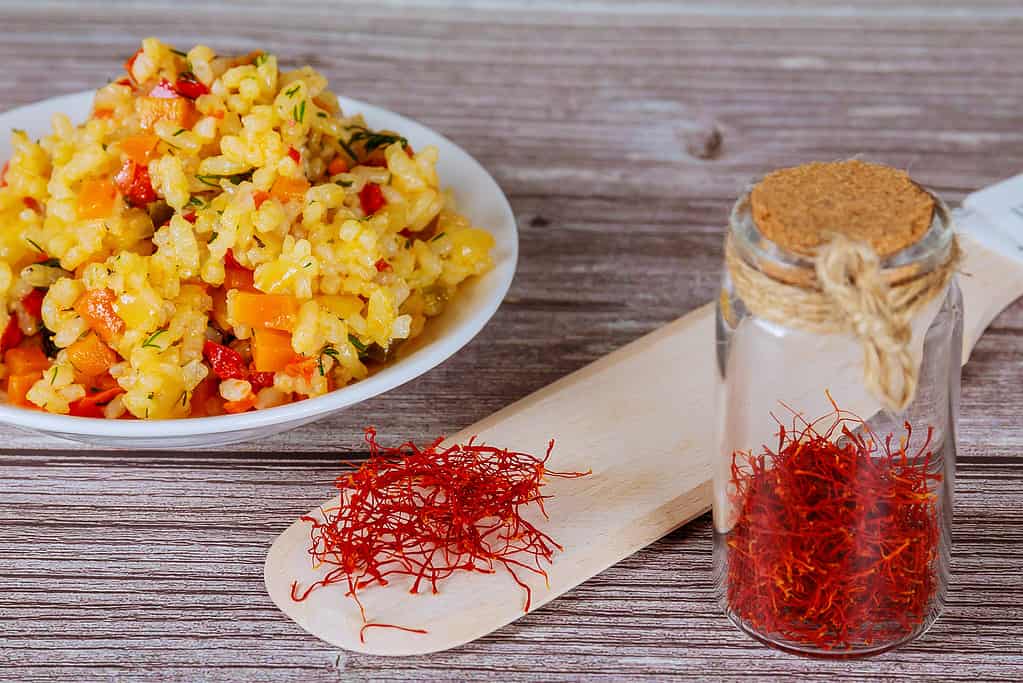
Saffron seasons a variety of foods, from savory to sweet.
©ZhakYaroslav/Shutterstock.com
How to Grow Saffron: Practical Considerations
While it is possible to grow saffron as a garden crop, it is generally not practical due to the high cost, time investment, labor intensiveness, climate requirements, low yield, and susceptibility to pests and diseases. It is often more practical and cost-effective to purchase saffron from established growers or retailers. The cost of saffron crocus corms varies depending on several factors such as the quality, quantity, and location of the seller. On average, a single high-quality saffron crocus corm costs between $1-3 USD. A single saffron crocus corm will produce one flower. Each flower produces three saffron threads, so a large number of corms are required to produce a meaningful quantity of saffron.
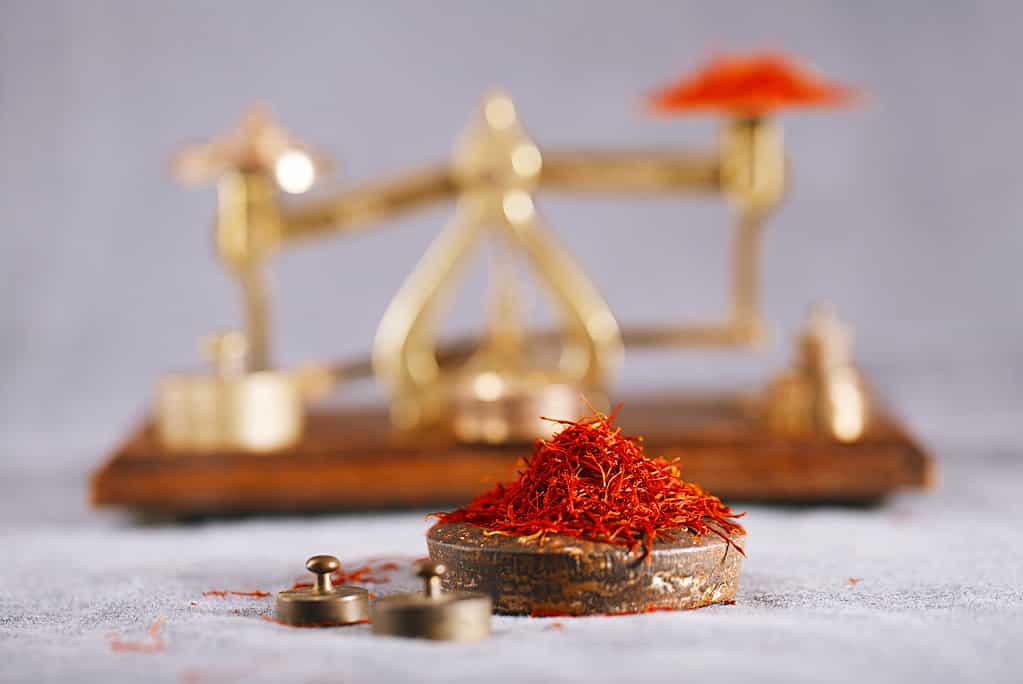
It takes between 150-200 saffron crocus corms to produce 1 ounce (28 grams) of dried saffron threads.
©elena moiseeva/Shutterstock.com
Really Not Trying to Dissuade You, but Facts are Facts
Each flower produces three stigmas (the saffron threads). It takes between 150-200 saffron crocus corms to produce 1 ounce (28 grams) of dried saffron threads. Even if you can purchase the corms on the low end, you’re already out $150-200 USD. Keep in mind that the yield can vary depending on growing conditions, and it can take a few years for the corms to reach full maturity and produce a maximum yield. And don’t neglect to factor in the time-consuming and labor-intensive processes of harvesting and drying the saffron threads, which add to the cost involved in producing saffron.

Don’t neglect to factor in the time-consuming and labor-intensive processes of harvesting and drying the saffron threads, which add to the cost involved in producing saffron.
©ZhakYaroslav/Shutterstock.com
How to Grow Saffron: Step-by-Step Guide
Ok, I suppose if you’re still reading, you have your heart set on growing saffron. Not that there’s anything wrong with that. So, without further coercion, herewith are the necessary steps for growing saffron.
Step One: Preparing the Crocus Bed
To have adequate space for your saffron crop you’ll need to dedicate 75 square feet (7 m) of your yard/lawn to the cause. Choosing the right location for your crocus bed is crucial. Saffron crocuses require 5-6 hours of direct sunlight daily and well-draining soil. It’s also a good idea to test your soil’s pH to ensure that it falls between 6.5-7.5, which is ideal for growing saffron. You can learn how to test your soil’s pH level here. Once you have chosen your location and checked the pH, turn the soil. This will help improve soil drainage and break up any compacted soil. Working the soil also allows you to add any necessary amendments, such as compost or aged manure, to improve soil fertility and structure.
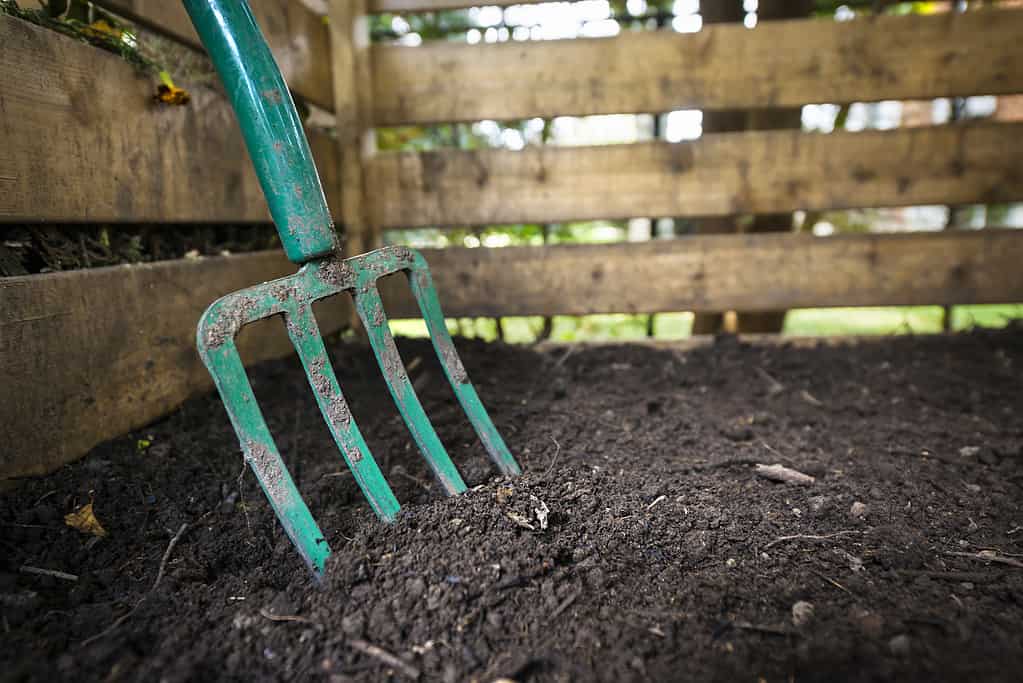
Working the soil also allows you to add any necessary amendments, such as compost or aged manure, to improve soil fertility and structure.
©Elena Elisseeva/Shutterstock.com
Step Two: Planting Depth and Spacing
Once the saffron bed has been prepared it’s time to plant the corms! Plant the corms late summer to early fall, 6-8 weeks before the first frost. The timing of first frost differs significantly by region. If you are unsure about the timing of the first frost in your region, you can learn more here. The corms should be planted 4 inches (10 cm) deep and 4-6 inches (10-15 cm) apart, with the pointed end facing up.
Saffron is best suited to USDA Hardiness Zones 6-9, which cover most of the temperate regions of the United States. The plant prefers a dry climate with hot summers and cold winters. While saffron can tolerate some cold temperatures, it is susceptible to frost damage, so it is important to protect the plants during cold weather. In areas with harsh winters, saffron can be grown in greenhouses or hoop houses to protect the plants from frost and cold temperatures.

Saffron is best suited to USDA Hardiness Zones 6-9, which covers most of the temperate regions of the United States.
©iStock.com/Hana Richterova
Step Three: Water Requirements
Water the corms immediately after planting, and then water sparingly throughout the growing season. Newly planted saffron corms need to be kept moist, but not too wet, so water only when the soil feels dry to the touch. Avoid overwatering, as this can cause the corms to rot. Once established, the saffron bed should be kept relatively dry in summer, when the corms are dormant.
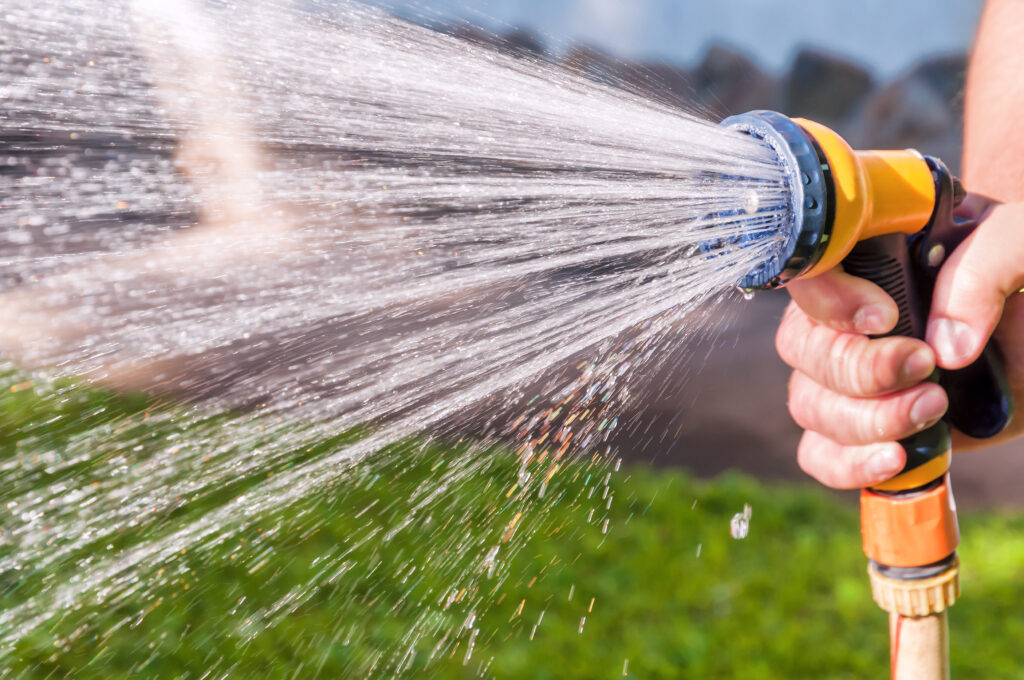
Avoid overwatering, as this can cause the corms to rot.
©iStock.com/vovashevchuk
Step Four: Mulching
Cover the soil with a layer of mulch to help retain moisture and suppress weeds. Use a natural mulch like straw or chopped leaves. After that, it’s wait and watch. New foliage begins to emerge in the fall, usually in late September or early October. The leaves emerge from the soil as slender green shoots that grow to a height of about 6-8 inches (15-20cm). These leaves are narrow and grass-like in appearance and will continue to grow throughout the fall. It’s important to note that saffron crocus corms should be planted in a location where they can be left undisturbed for several years. During this time, the corms will produce new foliage each year, which will eventually develop into the flowers that produce the prized saffron threads.
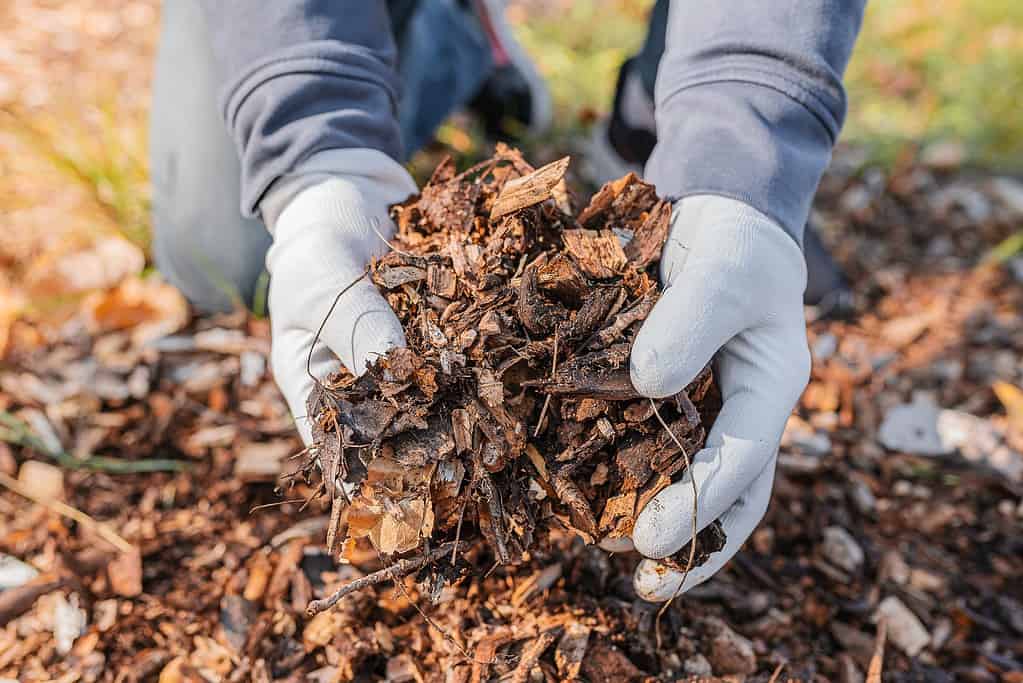
Cover the soil with a layer of mulch to help retain moisture and suppress weeds. Use a natural mulch like straw or chopped leaves.
©larisa Stefanjuk/Shutterstock.com
Step Five: Flowering
Saffron crocus flowers typically appear about 4-6 weeks after the leaves emerge in the fall. The flowers are large, showy, and lavender-to-purple in color, and they grow on slender stalks that rise above the foliage. Each flower produces three bright red stigmas that are harvested to make saffron spice. The flowers only bloom for a short period, so it’s important to keep a close eye on the plants and harvest the stigmas as soon as they are ready.
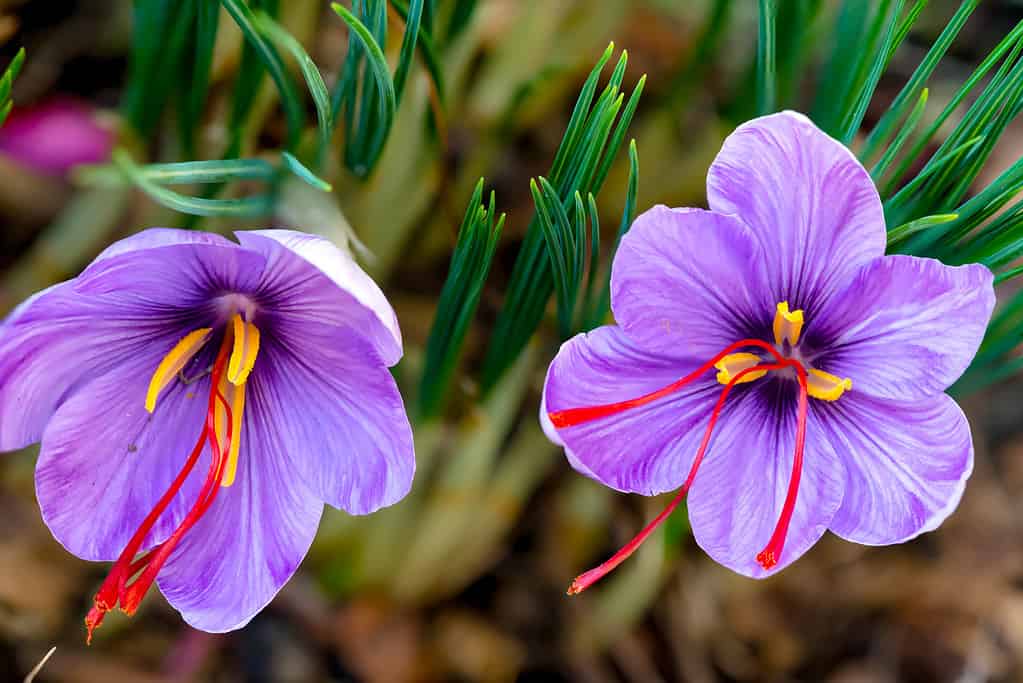
The flowers are large, showy, and purple in color, and they grow on slender stalks that rise above the foliage. Each flower produces three bright red stigmas.
©ThomasLENNE/Shutterstock.com
Step Six: Harvesting
In late October or early November, when the saffron flowers bloom, carefully pluck the bright red threads from the center of each flower. The stigmas of the saffron crocus must be harvested by hand during this brief window of time, as they are only viable for a short period after the flowers open This is a delicate process, as the threads are fragile and easily damaged. Once you have harvested all the threads, spread them out on a piece of cheesecloth or a paper towel to cure in a warm, dry place. After a few days, the saffron threads will be ready to use.
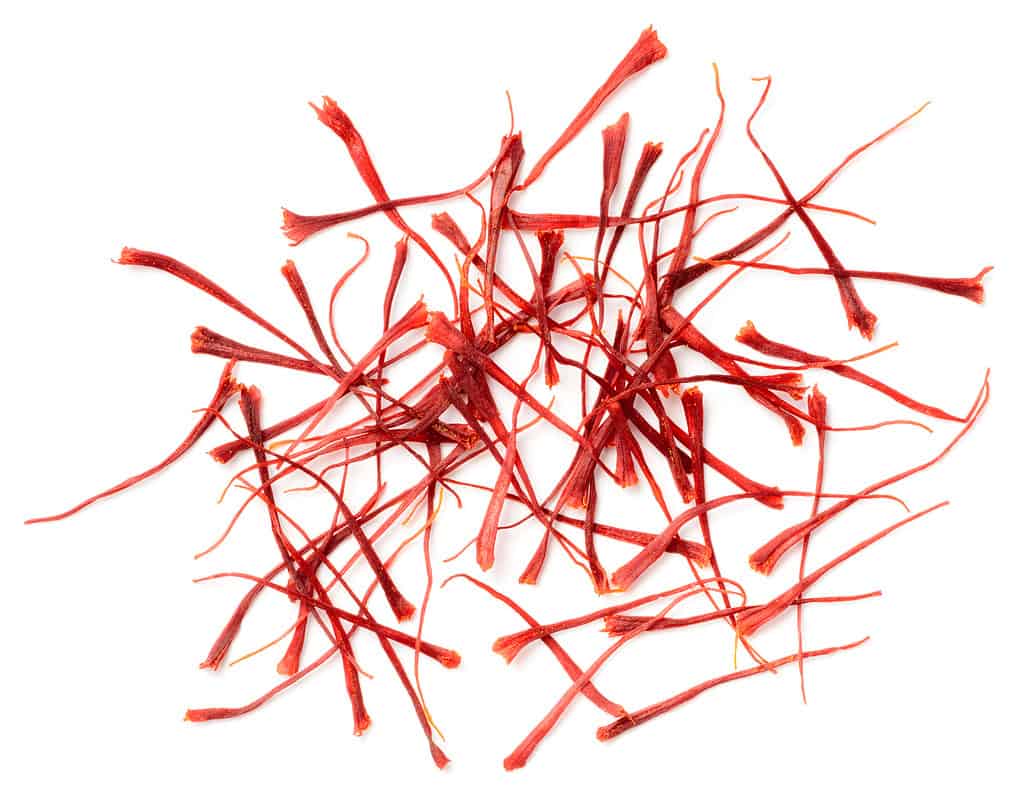
Once you have harvested all the threads, spread them out on a piece of cheesecloth or a paper towel to cure in a warm, dry place.
©AmyLv/Shutterstock.com
Step Seven: Care and Maintenance
During the growing season, keep an eye out for pests and diseases like spider mites, thrips, and corm rot. If you notice any problems, treat them promptly with an organic pesticide or fungicide. In the fall, after the foliage has died back, stop watering the corms and allow them to rest until the next growing season.
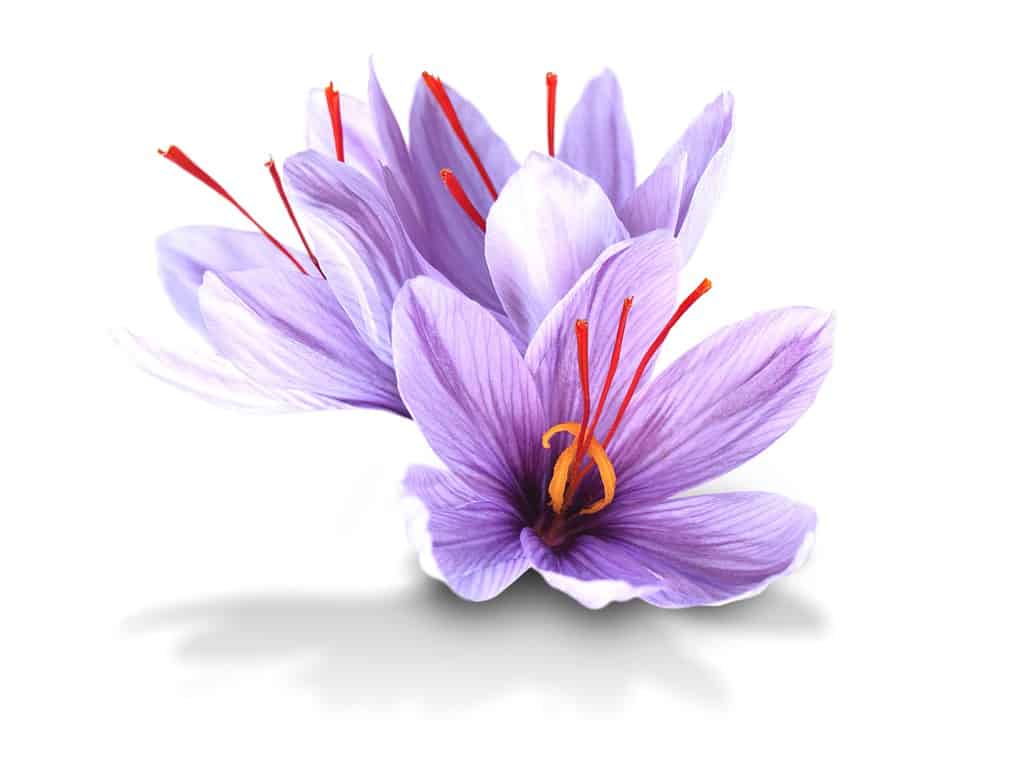
May your harvest be plentiful and your saffron threads be of the highest quality.
©meisam sharifnezhad/Shutterstock.com
Congratulations! If you’ve made it this far, you must be a serious saffron sower. Growing saffron is a labor-intensive process that requires patience, skill, and a deep understanding of the plant’s characteristics. As the saffron crocus flowers begin to bloom and the harvest season approaches, we extend our heartfelt congratulations for all of the effort required to produce this precious spice. May your harvest be plentiful and your saffron threads be of the highest quality, bringing joy and flavor to your table.
Five Fascinating Facts about Saffron
- The word saffron, in Arabic zafaran, means yellow.
- 70,000 saffron flowers are required to produce one pound (1/2 kg) of saffron!
- Saffron costs as much as $5000.00 USD/ pound
- In ancient civilizations, saffron was a status symbol. Affluent citizens would add saffron threads to their wine and their bath water.
- Saffron is native to the Mediterranean and Western Asia
Thank you for reading! Have some feedback for us? Contact the AZ Animals editorial team.








